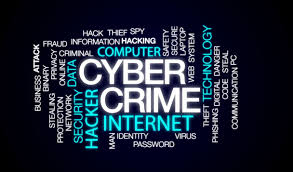CYBERBULLYING AND ITS LEGAL REMEDIES
ABSRACT
The use of the digital technologies has made the growth of the cyberbullying. The main reason behind the increase of cyberbullying due to the social media, messaging platforms, gaming platforms and mobile phones. It is repeated behaviour, aimed at scaring, angering, or shaming those who are targeted[1].cyber world is like a spider web, the substance it has been made off can become poisonous to any living creature. Every individual’s security and privacy will be the most essential element for the state and the country.
INTRODUCTION
Technology caused a positive as well as negative impact to the world .Although in many ways it has helped people to live their life with ease but at the same time there are rising certain problems to the people living in peace. In this article we are discussing the cyberbullying , its meaning, the Laws in India relating to it, the legal remedies to control it.
CYBERBULLYING
The National Crime Prevention Council defines cyberbullying as “the process of using the internet, cell phones or other devices to send or post text or images intended to hurt or embarrass another person[2].” Cyberbullying is the act of harassing or disparaging someone via email, direct messages, and other social media apps, among other digital platforms or communication sources. The term used when someone’s reputation is damaged or humiliated by nasty content disseminated about them on the internet.
INDIAN PERSPECTIVE
While the frequency of cyberbullying in India is rising daily, but also there is no direct laws regarding the same in the country. The Information Technology Act of 2000 and the Indian Penal Code contain provisions pertaining to the penalties associated with cyberbullying.
According to the Ministry of Women and Child Development’s press release on “Digital Exploitation of Children,” cyberbullying and cyberstalking against women are punishable under IPC sections 354A and 354D.
After section 354D was added to the IPC by the Criminal Law (Amendment) Act of 2013, it became illegal to stalk women online.
Place of occurrence of cyberbullying are as follows :
- Social Media ( Facebook, Instagram, Snapchat, Twitter, etc.)
- SMS (text messages from the cellular network)
- Instant Message Services (WhatsApp, Facebook messenger, I message, etc.)
In the case of State of West Bengal v. Animesh Boxi[3], the accused took possession of some private and obscene photographs of the victim by hacking into her phone, blackmailed her by threatening to upload the stolen pictures and videos on the internet and subsequently uploaded her private pictures and intimate videos onto an obscene website. In accordance with sections 66C and 66E of the IT Act as well as sections 354A, 354C, 354D, and 509 of the IPC, the West Bengal District Court found the defendants guilty.
It’s not too difficult to create a Facebook profile under someone else’s name, and with one, it’s possible to portray the victim in an inaccurate manner. There are so many incidents happening in India regarding the fake Facebook profile. Sections 354A (Sexual harassment and punishment for sexual harassment), 354D (stalking), 499 read with Section 500 (Defamation and Punishment for defamation), Section 507 (Criminal intimidation by an anonymous communication), and Section 509 (Word, gesture, or act intended to insult the modesty of a woman) of the IPC may apply when the creation of a fake Facebook profile is accompanied by the uploading of vulgar or obscene photos of the victim on such profile.
In Shubham Bansal v. The State (Govt of NCT Delhi) [4], the accused made up a fake Facebook profile under the name Nidhi Taneja and added the victim’s phone number. This annoyed, insulted, and harassed the victim, leading to the filing of a First Information Report (FIR) against the accused. The victim then filed a second application under Section 173(8) of the CrPC, asking the investigating officer to investigate the matter further. As a result, the case was remanded to the Metropolitan Magistrate for further consideration. Subsequently, the accused filed an application to have Section 509 of the IPC and Section 66A of the IT Act proceedings against him dropped.
In Hareesh v. State of Kerala[5], the petitioner made a fictitious Facebook profile, uploaded pornographic images of the victim online, and included her phone number beneath the offending post to allow outsiders to get in touch with her. After that, the applicant who had been arrested for offenses punishable by Section 354(D) of the IPC and Sections 67 and 67E of the IT Act filed an application for anticipatory bail. The Kerala High Court rejected the request for anticipatory bail, stating that it would not be appropriate for the court to meddle with the investigation and that the applicant’s involvement in the offenses was confirmed by the materials in the file.
CONCLUSION
From the above research, it can be concluded that there can be more new regulations that can be introduced within the coming years, the centre focus for the government should be safeguarding the privacy of any individual or business. By constant growth in the advancement of technology and increase in the regulations, the government should sustain the trust of its citizens by safeguarding and providing security of the data privacy which should not be fallout in the eyes of the people and not be a failing implementation for the citizens of India but also act as a lookout for the people around the world.
[1] UNICEF, Cyberbullying: What is it and how to stop it, February 2023, https://www.unicef.org/end-violence/how-to-stop-cyberbullying
[2] National Crime Prevention Council, An explanation of the growing phenomenon of cyberbullying, https://www.ncpc.org/resources/cyberbullying/what-is-cyberbullying/
[3] State of West Bengal v. Animesh Boxi , GR No. 1587 of 2017.
[4] Shubham Bansal v. The State (Govt of Nct Delhi), Criminal Miscellaneous Petition No. 2024 of 2018.
[5] Hareesh v. State of Kerala, Bail Application No. 4858 of 2018.


